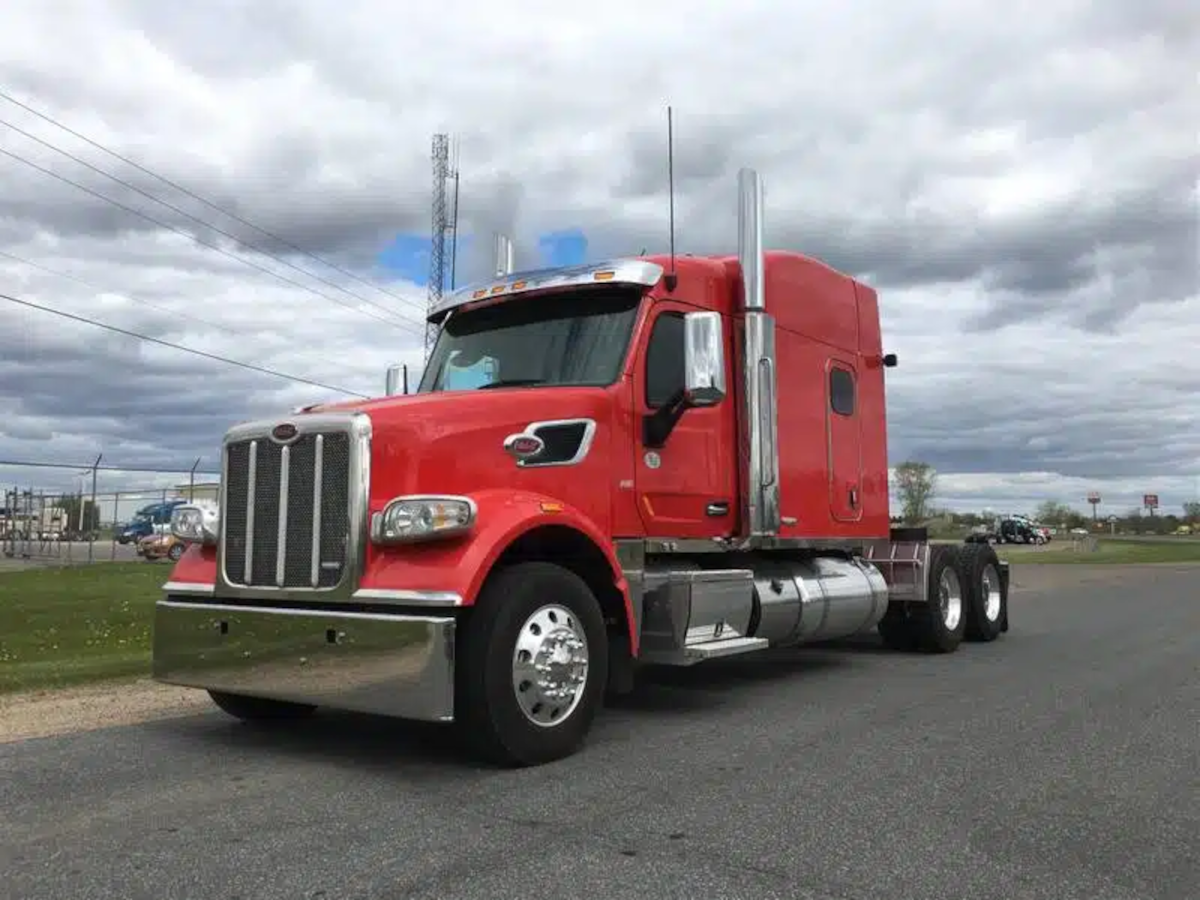Dec 6th 2024
Peterbilt has always been a competitive brand when it comes to Class 8 trucks. With this, it’s no wonder that the Peterbilt 367 became a popular unit due to its long development history and exceptional features. In this blog, we’ll discuss the history of Peterbilt 367 and the features that truck drivers love.
History of Peterbilt 367
The development of Peterbilt 367 can be traced to other variations with the release of Models 378 and 567. To understand this, let’s take a look at these models one by one.
Peterbilt 378 (1986)
In 1986, Peterbilt underwent numerous changes in its operational procedures and product line. The company was preparing to move its production to Denton, but it ultimately went to its original home for 26 years, Newark. This change, alongside other business adjustments, led to the development of Peterbilt’s new vocational line.

The 378 replaced the 348 and 349. It sported a fiberglass hood compared to the 379’s aluminum hood. Aside from this, it had a 119-inch bumper-to-back cam measurement, resulting in a shorter hood. It also came with a Detroit Diesel engine with 420 horsepower and a steer axle that can be set back or forward.
Regardless of its popularity, it was discontinued in 2007 due to changing market requirements.
Peterbilt 367 (2006)
In 2006, the medium-duty product line was expanded. The Class 365 and 367 were formally introduced to the American market, serving as successors to the 378. While the 365 also became famous among drivers, the 367 became one of the most popular models among hauling businesses.

The 367 sported a 123” bumper-to-back cab measurement, making it approximately 8” longer than the 365. It was intended for use in a highway configuration; thus, it was manufactured with external air cleaners.
Due to market demand, the 367 was made available with numerous engines and became a go-to truck model for drivers who wanted to fully customize their semi truck.
Peterbilt 567 (2013)
In 2013, Model 567 was introduced to the market. It’s a Class 8 heavy-duty truck, seemingly designed by combining the popular features of all Peterbilt trucks.

The 567 shared the size and functionality of the 367, while it sported the new cab design of the 579. It was also produced with the headlamps of the Model 389. The unit was initially offered with a set-back front axle, but due to popular demand, a set-forward front axle was also manufactured in 2015.
Specifications of the Peterbilt 367
The Peterbilt 367 graced numerous features that brought productivity and comfort to truck drivers. Let’s take a look at its specifications:
Engine
The 367 is available with either PACCAR MX and CUMMINS ISX engines. On the other hand, drivers have the option to choose a transmission from Eaton, Allison, or TTC Spider.
The model also has natural gas platform vehicles with Westport HD 15L engines. It offers a 400-475 horsepower rating and 1,450-1,750 lb ft. of torque, which creates a highly efficient fuel-to-power ratio.
Most importantly, the 367 is powered by Peterbilt’s SmartLINQ, which monitors the overall functionality of your truck 24/7. It records the engine’s health and emissions in line with the market’s parameters. The SmartLINQ automatically alerts your nearest Peterbilt dealership if your truck veers from its optimal performance, allowing you to prevent severe damage and costly maintenance procedures.
Interior
The 367 has one of the most ergonomic and high-tech dashboards. The rugged ProBilt interior features five grab handles and a charcoal-colored dash made of durable materials that show fewer scratches and scuffs despite continuous use.
Most importantly, the Peterbilt 367 has the powerful Peterbilt SmartAir, a state-of-the-art HVAC system. It maintains an excellent climate within the cabin without the need to idle your conventional cab truck.
Ultimately, the truck is powered by SmartNav. It’s an advanced infotainment system that provides accurate GPS navigation and real-time road and vehicle monitoring. The controls are also ergonomically placed for better control. The overall interior design makes the 367 safer, more efficient, and more economical.

Exterior
The 367 is made of all-aluminum cabs, making it durable, lightweight, and corrosion-resistant. Its impressive weight improves its aerodynamics, further boosting its fuel economy.
Aside from this, it also came with new LED lighting technology, offering increased visibility and a better driving experience. Compared to regular halogen lights, these LED lights only consume half the power. Furthermore, the InfraRed heaters also keep the lens clear during harsh weather conditions.
Sleeper Options
The Peterbilt 367 is made available in Low Roof and Ultra Cab sleeper options, with sizes ranging from 36” to 44”. The model is also manufactured with best-in-class sleeping accommodations, gracing multiple options for lighting, shelves, and storage.
The 367 sleeper cabs were designed with the utmost attention to detail to deliver ultimate driver comfort.
Upgrading the Peterbilt 367
One of the best things about Peterbilt models is that they’re built to last. The engine and major cabin parts of these trucks are durable enough to maintain their high resale value and performance.
However, despite having numerous exceptional features, upgrades are still essential for secondhand trucks, including the Peterbilt 367. For this reason, we highly recommend getting premium HVAC aftermarket semi truck parts to ensure the maximum performance of your AC system.
Upgrading the HVAC parts of your 367 will ensure that you can get the most out of your Peterbilt SmartAir. This prevents the risk of replacing your entire AC system due to severe damage.
Enjoy a Comfortable Ride with the Peterbilt 367
Maximize the power of your Peterbilt 367 by getting premium semi truck parts. After all, it’s made to provide all truck drivers with nothing but comfort and convenience.

